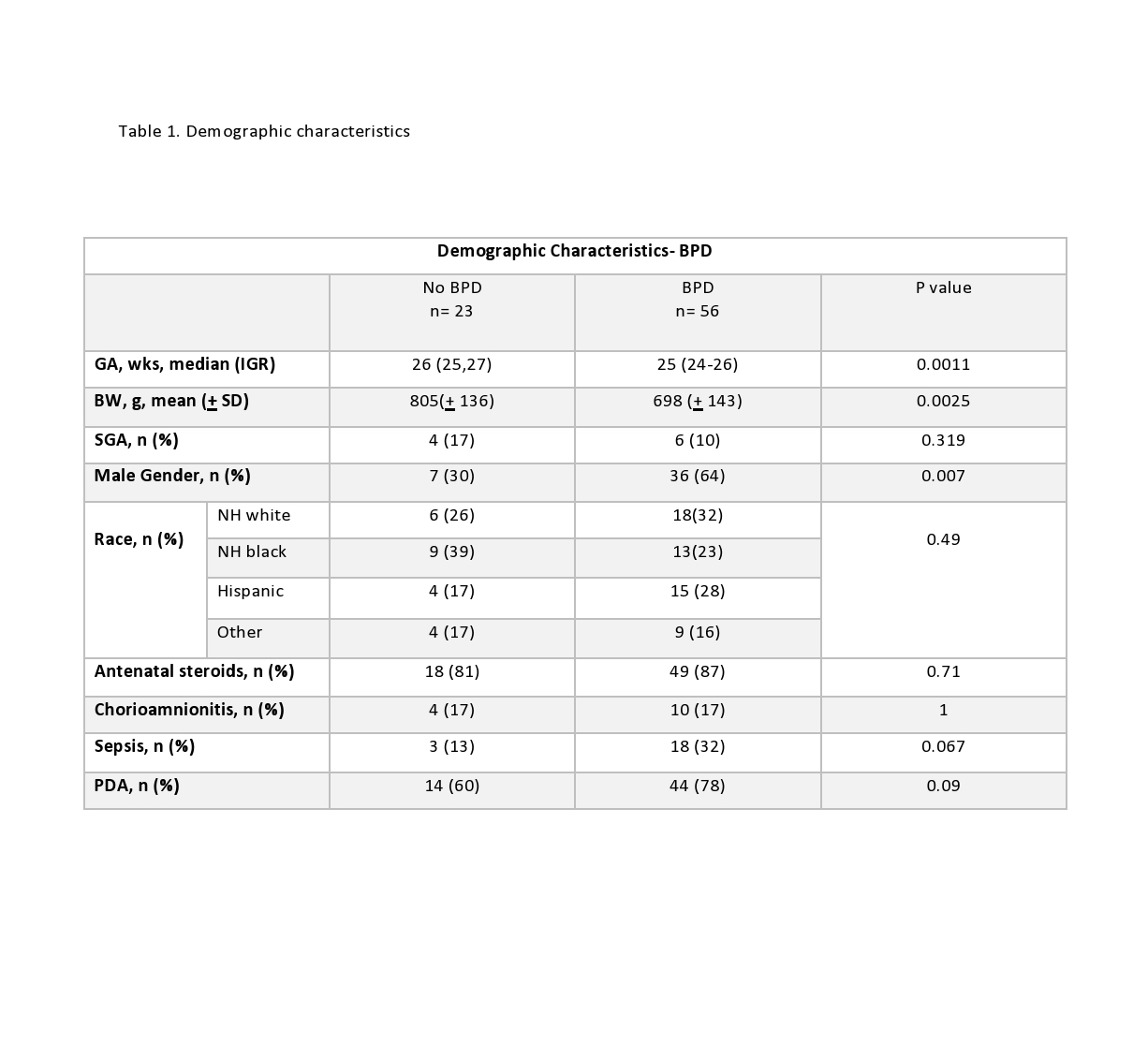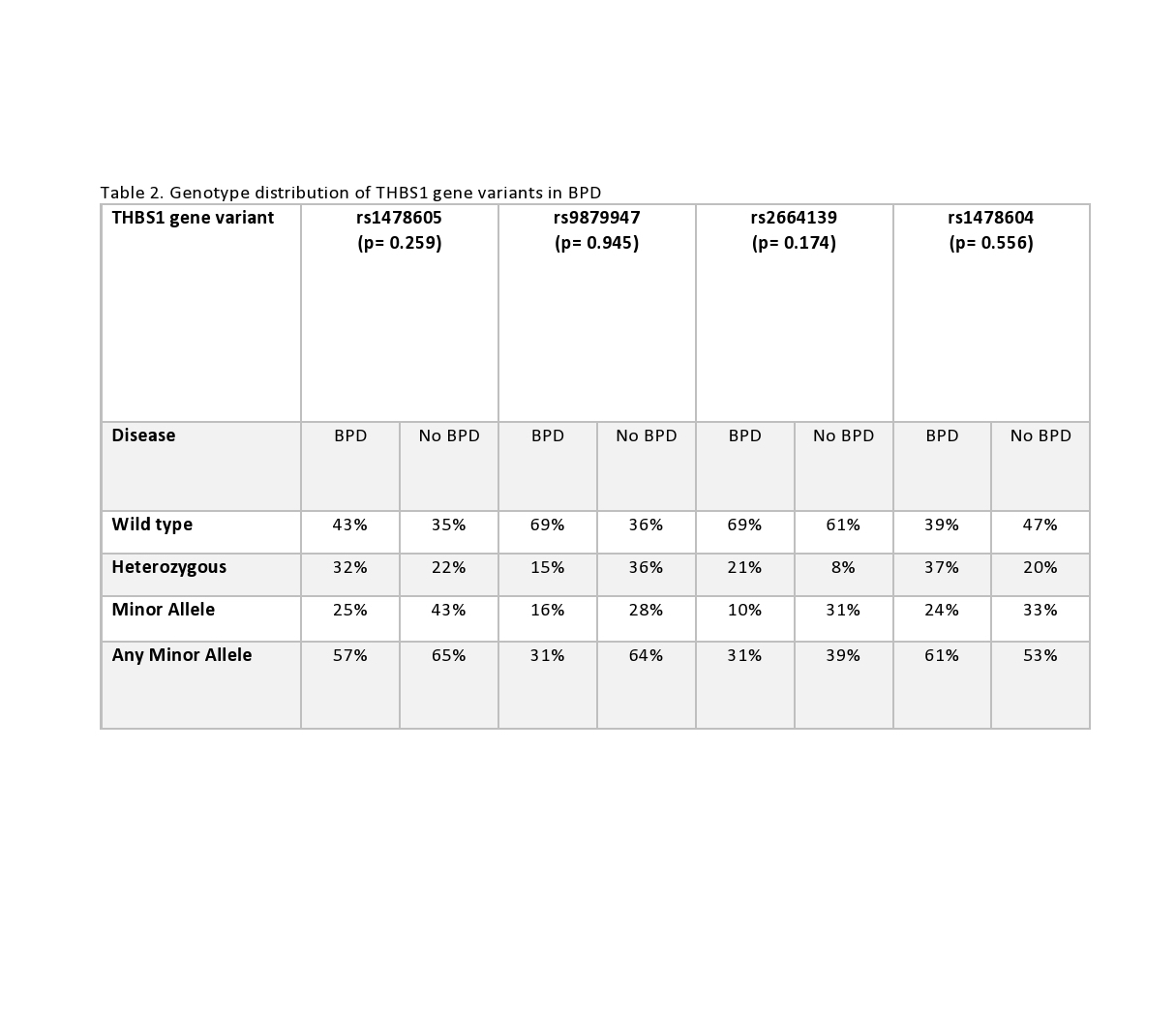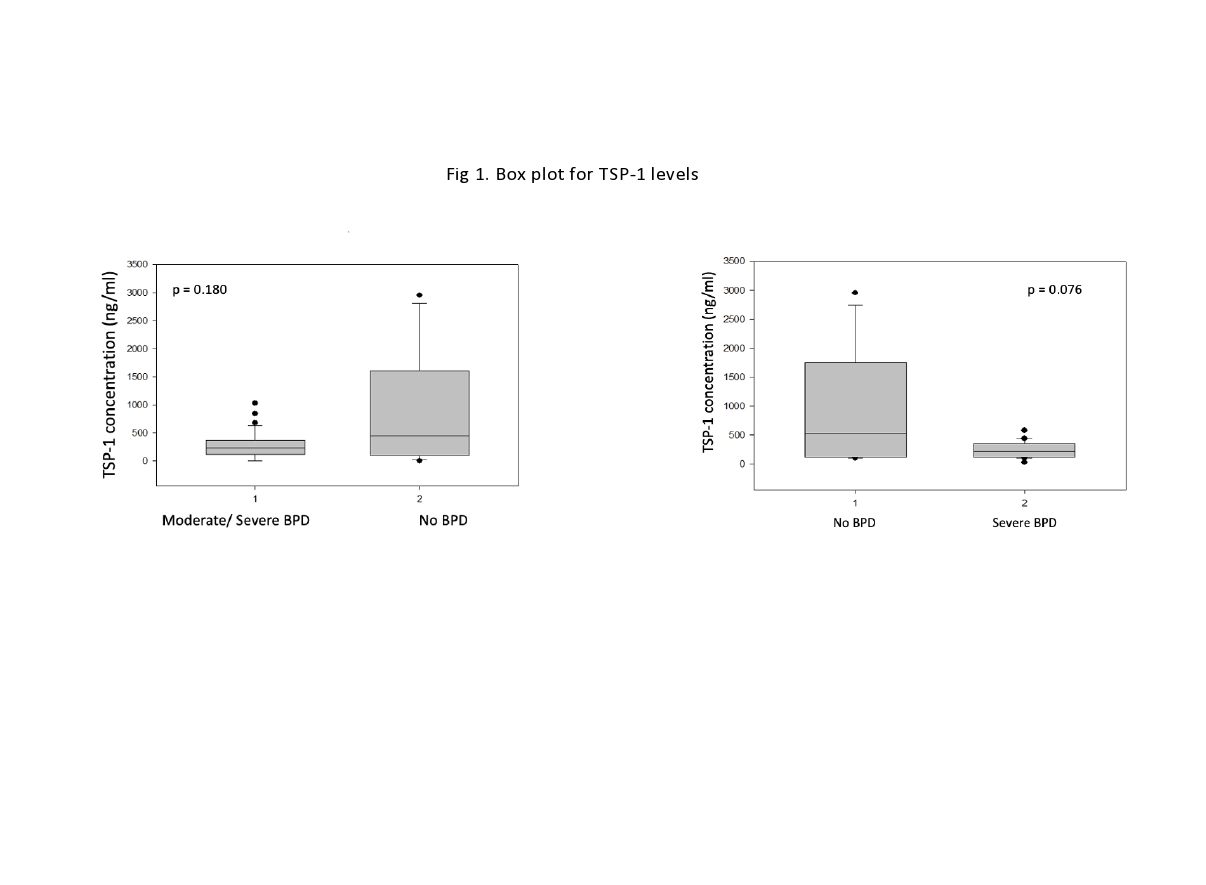Back
Background: Genetic foundations account for approximately 50-80% of the predisposition to BPD. Understanding molecular regulation of angiogenesis in premature lungs may provide insight into the mechanisms underlying the microvascular and ultimately alveolar abnormalities in BPD.
Thrombospondin-1 (TSP- 1) is an extracellular glycoprotein that is a potent endogenous inhibitor of angiogenesis. TSP-1 interacts with the extracellular matrix, cytokines, cellular receptors, and growth factors and mediates endothelial cell migration, proliferation, survival, and apoptosis. TSP-1 directly binds and activates latent TGFβ1, which is a cytokine strongly associated with the development of BPD. In adults, variants of the thrombospondin-1 gene (THBS1) are associated with hypoxia-driven vascular remodeling to an extent that it is commonly referred to as “hypoxio-spondin”. However, to date, evidence on the role of TSP-1 in neonatal BPD is lacking.
Objective: 1. To examine the effects of variants of THBS1 in ELBW infants with susceptibility to BPD
2. To determine whether TSP-1 expression is increased in ELBW infants with BPD
Design/Methods: This was an observational, cohort study including ELBW infants with and without BPD. DNA was isolated from buccal swabs and subjected to RT-PCR with specific TaqMan probes for THBS1 gene variants. TSP-1 protein expression was measured in tracheal aspirates collected within the first seven days. Chi-square and Fisher exact test for categorical variables. Mann-Whitney Rank Sum and t-test were used for continuous variables; z-test for allele frequencies, with p< 0.05 statistically significant.
Results: Demographic characteristics as in table 1. ELBW infants with BPD had a significantly lower gestational age (25 vs 26 weeks, p= 0.0011) and birth weight (698g vs 805g, p= 0.0025). THBS1 variants, rs1478604, rs2228262, rs1478605, rs9879947, rs9879947, and rs2664139 were not significantly associated with BPD. (Table 2) Early airway TSP-1 protein levels were not significantly different in infants without BPD compared to the infants with moderate to severe BPD[527 (113- 1754) ng/ mL vs 267 (136-384)ng/mL; p = 0.180] or severe BPD [527 (113- 1754) ng/ mL vs 210 (116-352)ng/mL; p = 0.076] respectively. (Fig 1)
Conclusion(s):
ELBW infants with BPD have lower gestational ages and birth weights than those without. THBS1 variants examined and TSP-1 protein expression was not significantly different among the 2 groups. We anticipate that a larger sample with race/ethnic stratification may yield detectable effect.



Neonatal Pulmonology
Neonatal Pulmonology 3: BPD Clinical and Translational
278 - Association of Thrombospondin-1 (THBS1) Gene Variants and Protein Expression with Susceptibility to BPD in Extremely Low Birth Weight (ELBW) Infants
Sunday, April 30, 2023
3:30 PM – 6:00 PM ET
Poster Number: 278
Publication Number: 278.341
Publication Number: 278.341
Parvathy Krishnan, Maria Fareri Children's Hospital at Westchester Medical Center, white plains, NY, United States; Van Trinh, New York Medical College, White Plains, NY, United States; Lance A. Parton, Maria Fareri Children's Hospital at Westchester Medical Center, Valhalla, NY, United States

Parvathy Krishnan, MBBS (she/her/hers)
Fellow
Maria Fareri Children's Hospital at Westchester Medical Center
white plains, New York, United States
Presenting Author(s)
Background: Genetic foundations account for approximately 50-80% of the predisposition to BPD. Understanding molecular regulation of angiogenesis in premature lungs may provide insight into the mechanisms underlying the microvascular and ultimately alveolar abnormalities in BPD.
Thrombospondin-1 (TSP- 1) is an extracellular glycoprotein that is a potent endogenous inhibitor of angiogenesis. TSP-1 interacts with the extracellular matrix, cytokines, cellular receptors, and growth factors and mediates endothelial cell migration, proliferation, survival, and apoptosis. TSP-1 directly binds and activates latent TGFβ1, which is a cytokine strongly associated with the development of BPD. In adults, variants of the thrombospondin-1 gene (THBS1) are associated with hypoxia-driven vascular remodeling to an extent that it is commonly referred to as “hypoxio-spondin”. However, to date, evidence on the role of TSP-1 in neonatal BPD is lacking.
Objective: 1. To examine the effects of variants of THBS1 in ELBW infants with susceptibility to BPD
2. To determine whether TSP-1 expression is increased in ELBW infants with BPD
Design/Methods: This was an observational, cohort study including ELBW infants with and without BPD. DNA was isolated from buccal swabs and subjected to RT-PCR with specific TaqMan probes for THBS1 gene variants. TSP-1 protein expression was measured in tracheal aspirates collected within the first seven days. Chi-square and Fisher exact test for categorical variables. Mann-Whitney Rank Sum and t-test were used for continuous variables; z-test for allele frequencies, with p< 0.05 statistically significant.
Results: Demographic characteristics as in table 1. ELBW infants with BPD had a significantly lower gestational age (25 vs 26 weeks, p= 0.0011) and birth weight (698g vs 805g, p= 0.0025). THBS1 variants, rs1478604, rs2228262, rs1478605, rs9879947, rs9879947, and rs2664139 were not significantly associated with BPD. (Table 2) Early airway TSP-1 protein levels were not significantly different in infants without BPD compared to the infants with moderate to severe BPD[527 (113- 1754) ng/ mL vs 267 (136-384)ng/mL; p = 0.180] or severe BPD [527 (113- 1754) ng/ mL vs 210 (116-352)ng/mL; p = 0.076] respectively. (Fig 1)
Conclusion(s):
ELBW infants with BPD have lower gestational ages and birth weights than those without. THBS1 variants examined and TSP-1 protein expression was not significantly different among the 2 groups. We anticipate that a larger sample with race/ethnic stratification may yield detectable effect.



